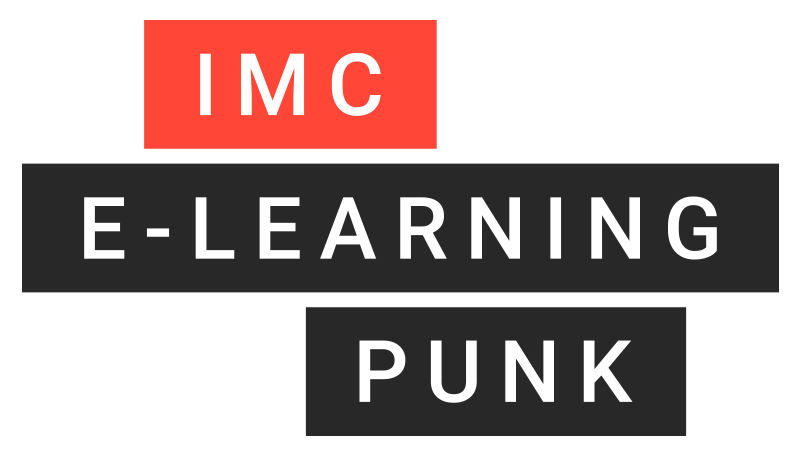
Leadership Training: When the Boss Takes the Learner’s Seat
Improving leadership ability through effective training
Our perceptions and expectations of leadership personnel have changed a lot in recent years. Today’s managers are expected to have both subject expertise and good people skills. Subject expertise can be learned, obviously, but what about the people stuff – the soft skills?
Managers are expected to be able to see things from the employee’s perspective and respond appropriately. The requirements go far beyond merely delegating projects and issuing instructions. The usual hard skills need to be tempered with empathy and judgement in dealings with staff. And that’s where our experts can help – by designing leadership training courses.


Kathrin Heidler, Instructional Designer at imc
Kathrin Heidler has a degree in education, with a major in digital learning. Since 2020 she’s been an educational designer at imc, designing digital learning formats, blended learning strategies and web-based training courses. And she has a strong focus on leadership training. “For me, leadership means empathy for staff, backing your team – both internally and externally – and having technical expertise,” she says. “These are all things you can train for – the hard skills, obviously, but the social skills too. What I find exciting is to dive deep into the ‘how’ of that.”
“Leadership training” is not the same thing as “management training”
Heidler explains that at imc, leadership training means focusing on and learning the core competencies of effective leadership. It relates exclusively to non-technical skills, like communication, empathy, organisational and methodological competencies, and other soft skills.
Management training, on the other hand, relates to learning about new products, specific processes or strategies. It’s about acquiring knowledge and technical – or “hard” – skills.
Both types of training can be combined, of course, but they are generally intended for two different target groups:
- Employees new to leadership roles who need to learn the necessary people skills and understand their company’s mission.
- Employees already in leadership roles who need to learn new strategies or acquire new technical knowledge at the managerial level.

However, in both cases, the leaders concerned are generally time poor when it comes to learning. “Leadership personnel are always on a tight schedule, and time is always a big challenge for them,” Heider explains. “That’s why it’s vital to be efficient and find out in advance exactly who needs to do what training. This is especially true for management training courses.
In these cases, I like to work with our KPI-based Readiness Check. It allows me to gauge each learner’s existing knowledge level so that I can suggest appropriate content and learning options. That saves a lot of time and frustration.”
Success hinges on having clear parameters and expectations heading into these courses. “Both parties must have a realistic understanding of the basic requirements and constraints. And by both parties, I mean the company seeking leadership training, and us as their strategic partner,” Heidler explains. “What’s to be learned, and how? Realistically, how much time is available for the leadership training? Only by having clear objectives can we achieve successful training outcomes.”

“Effective course design is about getting from the aspirational to the factual”
Katrin Heidler has already supported numerous customers as a strategic sparring partner for the design of leadership training courses.
“Given all the hype around leadership and management training, I make a point of focusing the client on the basics,” she explains. “So, at the start, we stay very analytical and nail down things like exactly who the target group is. What defines the group? What is the learning objective? What specific actions and behaviours is the course supposed to teach?
“It’s not enough to simply say, I want to make the managers more agile. I have to be able to specify exactly what actions constitute agile behaviour. Breaking it down to specific actions enables the courses we design to achieve the desired outcome of better leadership ability.”
When designing leadership training, start by writing a list of core competencies and mapping those to specific types of action. This will provide clarity around what’s expected of the training because it provides a bridge from aspiration to facts and actions.
Choosing the right learning formats
Modular learning nuggets:
learners can complete a training session in just 10-15 minutes
Performance cards as digital flashcards:
Learning content can be presented in a short and punchy way
Virtual classrooms:
Time is blocked out directly in the learner’s calendar; this format does, however, require a trainer
Hot curriculum picks for leadership training
In closing, we asked Kathrin Heidler to give us her picks for learning objectives for leadership training in 2023:
“Leaders need to be aware that we’re in a time of economic and demographic change. And they need to be confident and sure – not fearful – in dealing with this change. They should continue to work on their own technical skills. Last but not least, they need to see their staff as people, with all the needs that being human entails. That would be my learning recommendation.”


Can Germany afford its current AI scepticism?
Artificial intelligence (AI) is often viewed sceptically in Germany, but often without justification. In this interview with Kristian Schalter, we talk about how future technologies will change our working world.

AI in Corporate Learning
There are many fears about the topic of artificial intelligence (AI). But especially in corporate learning, AI can be a great help.

Contact person
I joined the imc newsroom team in 2021. As a journalist my heart beats for content and storytelling.
I’m excited to figure out how e-learing and digitization affect the future of work. My task is to create content to talk about and I’m always looking for trends.
Privately I love to travel and eat Tapas.
Topics: E-Learning Trends, Corporate Social Responsibility, Press and Influencer Relations
